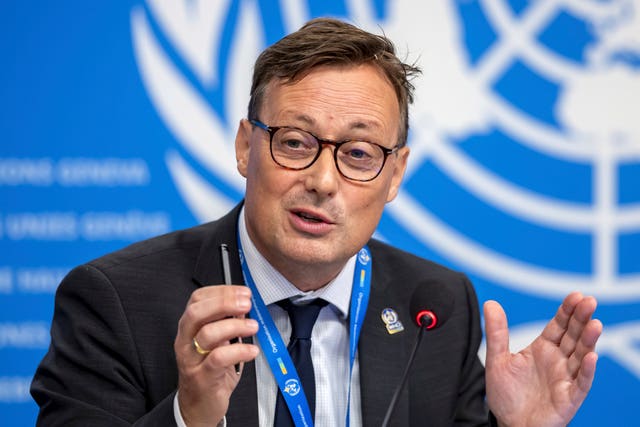World’s rivers faced driest year in more than three decades in 2023, UN says
‘Water is the canary in the coalmine of climate change’, WMO Secretary-General Celeste Saulo said.

The UN weather agency is reporting that 2023 was the driest year in more than three decades for the world’s rivers, as the record-hot year underpinned a drying up of water flows and contributed to prolonged droughts in places.
The World Meteorological Organisation (WMO) also says glaciers that feed rivers in many countries suffered the largest loss of mass in the last five decades, warning that ice melt can threaten long-term water security for millions of people globally.
Releasing the report on Monday, WMO Secretary-General Celeste Saulo said: “Water is the canary in the coalmine of climate change.
“We receive distress signals in the form of increasingly extreme rainfall, floods and droughts which wreak a heavy toll on lives, ecosystems and economies.”
She said rising temperatures had in part led the hydrological cycle to become “more erratic and unpredictable” in ways that can produce “either too much or too little water” through both droughts and floods.
The weather agency, citing figures from UN Water, says some 3.6 billion people face inadequate access to water for at least one month a year – and that figure is expected to rise to five billion by 2050.

The world faced its hottest year on record in 2023, with 2024 seeing the hottest summer ever – raising warning signs over a possible new annual record for this year.
Stefan Uhlenbrook, director of hydrology, water and cryosphere at WMO, said: “In the (last) 33 years of data, we had never such a large area around the world which was under such dry conditions.”
The WMO called for improvements in data collection and sharing to help clear up the real picture for water resources and help countries and communities take action in response.
The report said the southern United States, Central America and South American countries Argentina, Brazil, Peru and Uruguay faced widespread drought conditions and “the lowest water levels ever observed in Amazon and in Lake Titicaca”, on the border between Peru and Bolivia.
The WMO said half of the world faced dry-river-flow conditions last year.





